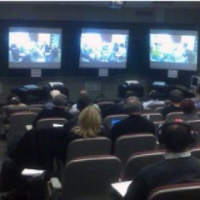Trial Presentation Your Partner for Powerful Evidence Demonstration in Court
Trial Presentation Your Partner for Powerful Evidence Demonstration in Court
Blog Article
Understanding Test Discussion: Tips for Engaging and Persuasive Court Room Strategies
In the realm of test discussion, the capability to engage and encourage is critical. The challenge lies in seamlessly integrating them right into a cohesive discussion. What methods can really elevate a test presentation from regular to phenomenal?
Understanding Your Audience
To successfully understand test discussion, it is crucial to understand your audience. Understanding their demographics, backgrounds, and prospective predispositions can assist customize your discussion to resonate with them successfully.

An understanding of the judge's preferences and court rules is equally important, as it can impact the circulation of your discussion. Juries may prioritize brevity and clarity, so offering your instance in an uncomplicated fashion can improve your integrity. Furthermore, recognizing the opposite guidance's strategies can assist in preparing counterarguments that properly address their points.
Inevitably, understanding your target market enables you to involve them extra efficiently, fostering link and persuasion throughout the test (trial presentation). By leveraging understandings concerning their motivations and assumptions, you can produce a compelling discussion that resonates and inevitably affects the outcome of the instance. This foundational expertise is necessary for any type of attorney intending to achieve success in the court room
Crafting a Compelling Story
A well-crafted narrative functions as the backbone of an effective test presentation, assisting the audience with the intricacies of the situation. This story ought to be structured to involve jurors mentally and intellectually, making the realities relatable and reasonable. By weaving with each other the elements of the instance-- such as the timeline, key occasions, and pivotal statements-- lawyers can produce a systematic storyline that resonates with jurors.
To attain this, it is vital to identify the central motifs that will drive the story. Attorneys must focus on the motivations and objectives of the parties entailed, illustrating the human elements of the situation (trial presentation). This strategy not only preserves juror passion but additionally fosters empathy, leading them to attach personally with the story
Each section of the narrative ought to develop toward a compelling climax, culminating in a persuasive conclusion that reinforces the case's core message. Ultimately, a strong story not just makes clear the issues at hand however also produces an enduring perception that can affect the end result of the test.
Making Use Of Aesthetic Aids Properly
Just how can aesthetic aids enhance the efficiency of a test discussion? Aesthetic help offer as powerful tools that can substantially enhance juror understanding and retention of complex information - trial presentation. When utilized thoughtfully, they can clarify bottom lines, illustrate relationships, and stress important evidence that supports the situation narrative
Reliable visual help consist of graphes, graphs, timelines, and images, which can streamline elaborate information and give context. For circumstances, a timeline can succinctly convey the series of events, while a graph can highlight analytical information in an aesthetically engaging fashion. The critical use of multimedia discussions can also boost interaction and keep juror rate of interest throughout the test.
Furthermore, aesthetic aids can assist to evoke emotional feedbacks, enhancing the human components of a situation. By presenting photographs or videos appropriate to the case, lawyers can create a much more engaging and relatable narrative. It is necessary to ensure that visual aids are properly designed and not excessively complicated, as this can lead to complication instead than clarity.
Engaging Body Language Methods
Aesthetic help are not the only tools that can enhance the efficiency of a test discussion; involving body movement techniques also play an important duty in recording juror focus and this content conveying confidence. A presenter's nonverbal hints can dramatically affect jurors' perceptions and reactions, making it necessary to grasp these methods.

Furthermore, varying your singing tone and speed can boost your narration, making it more compelling. Stopping briefly tactically permits jurors to soak up crucial information and indicates the relevance of what you are saying. Relocating purposefully within the courtroom can help strengthen your factors, provided it does not distract from your message.
Incorporating these body movement strategies will certainly not just improve your court presence but also cultivate an even more convincing connection with jurors, eventually adding to the success of your trial presentation.
Exercising for Influence
Efficient trial presentations pivot not just on the web content however likewise on the shipment, making practice important for impact. The importance of rehearsal can not be overemphasized; it permits lawyers to refine their debates and establish a commanding presence in the court room. Taking part in deliberate technique assists attorneys to recognize their staminas and weaknesses, allowing them to adjust their pacing, tone, and body movement appropriately.
To practice for influence, mimic trial problems as closely as feasible. This includes using aesthetic aids, exercising in front of coworkers, and getting helpful resources constructive feedback. Recording practice can site web also give valuable understandings right into delivery design and audience interaction. Concentrate on clarity in speech, making certain that complex lawful concepts are connected efficiently to the court.

Conclusion
Grasping test discussion involves a multifaceted technique that incorporates audience understanding, narrative advancement, aesthetic aids, and body language. These aspects function synergistically to create a convincing court room experience. By efficiently engaging jurors via clear narration and impactful visuals, and by using confident body language, test advocates can substantially enhance their debates. Extensive practice in simulated settings better strengthens these approaches, making sure that each discussion resonates and leaves an enduring perception on the court.
Report this page